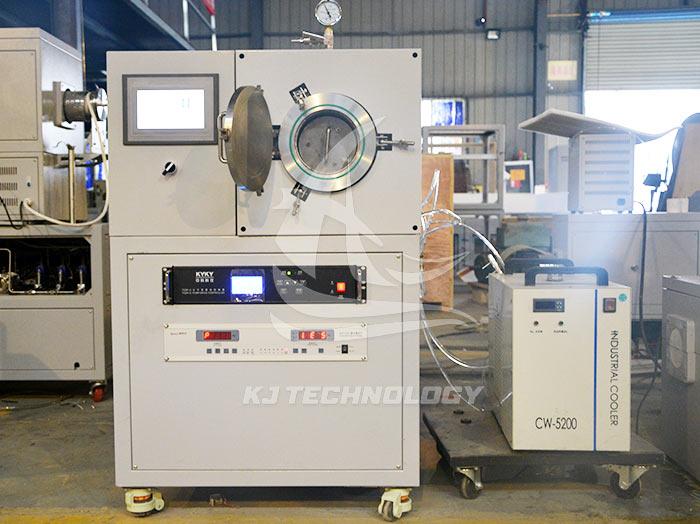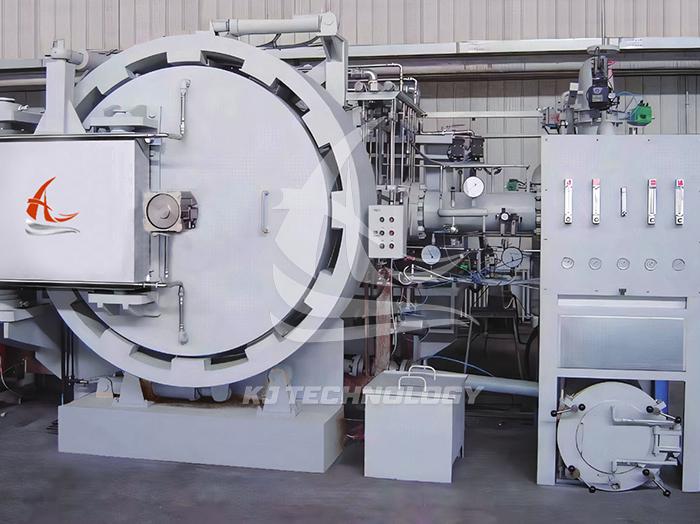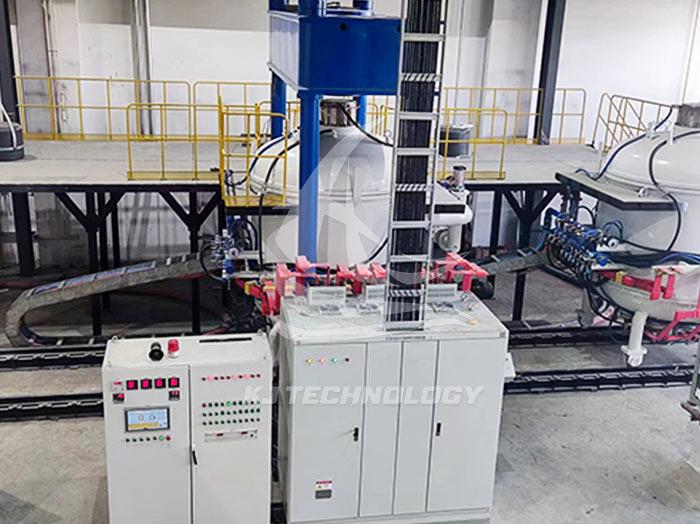Can electric heating vacuum heat treatment furnace sinter?
 08-14-2025 Author: KJ technology
08-14-2025 Author: KJ technology
The electric heating vacuum heat treatment furnace can sinter, and its combination of vacuum environment and electric heating technology provides ideal conditions for sintering process. The specific analysis is as follows:
1. The core requirements of sintering process and the adaptability of vacuum heat treatment furnace
Sintering is the process of densifying powder materials through high-temperature heating, with key requirements including:
High temperature environment: It is necessary to reach a high temperature below the melting point of the material (such as 1600 ℃ or above for ceramic sintering).
Low oxygen environment: prevent material oxidation and avoid the introduction of impurities.
Uniform heating: Ensure that all parts of the material are heated uniformly to reduce deformation.
Atmosphere control: Some materials require inert gas protection or specific atmosphere reactions.
The electric heating vacuum heat treatment furnace meets these requirements through the following design:
Vacuum environment: The pressure inside the furnace can be reduced to below 10 ⁻ Pa, isolating oxidizing gases such as oxygen and water vapor to avoid surface oxidation or carburizing of materials.
Electric heating system: using resistance heating, induction heating or microwave heating methods, it can achieve medium to high speed heating (such as 50-100 ℃/hour), high temperature uniformity, and temperature difference of ≤± 1 ℃.
Atmosphere control: Inert gases such as argon and nitrogen can be filled, or the pressure can be adjusted through a vacuum pump to meet the sintering needs of different materials.
2. The specific application of vacuum heat treatment furnace in sintering process
Ceramic material sintering
Application scenario: Densification treatment of ceramic materials such as alumina and zirconia.
Advantages: Vacuum environment eliminates gas-phase reactions such as oxides and carbides, resulting in high-purity and high-density ceramic materials. For example, alumina ceramics can achieve a density of over 99% and a hardness increase of 20% after vacuum sintering.
Case: Vacuum sintering furnaces are widely used in industries such as architectural ceramics, sanitary ceramics, and fire-resistant ceramics for continuous or intermittent sintering.
Metal Powder Metallurgy
Application scenario: Forming and sintering of powder materials such as hard alloys (such as WC Co) and dysprosium metal.
Advantages: The vacuum environment promotes diffusion and bonding between powder particles, reducing porosity. For example, after vacuum sintering, the bending strength of hard alloy cutting heads is increased by 30%, and the wear resistance is significantly improved.
Case: Military units use vacuum induction sintering furnaces for powder forming and sintering of tungsten, molybdenum, and their alloys, utilizing the principle of medium frequency induction heating to achieve efficient sintering.
Preparation of composite materials
Application scenarios: Ceramic metal composite materials, carbide nitride composite materials, etc.
Advantages: Vacuum environment avoids oxidation reactions between different materials and promotes interface bonding. For example, after vacuum sintering, the interface bonding strength of ceramic metal composite materials can reach over 150MPa, meeting the needs of fields such as aviation and high-speed trains.
Special material processing
Application scenarios: Preparation of new materials such as boron compounds, carbon compounds, nitrides, etc.
Advantages: Stable material chemical composition in vacuum environment, avoiding the introduction of impurities. For example, after vacuum sintering, the thermal conductivity of silicon nitride ceramics increases by 15%, making it suitable for the field of electronic packaging.
3. Technical advantages of sintering process in vacuum heat treatment furnace
Significant improvement in material properties
Density and hardness: After vacuum sintering, the material density approaches the theoretical value, and the hardness increases by 10% -20%.
Mechanical performance: The bending strength, impact toughness and other indicators are better than those of air sintering, for example, the bending strength of hard alloy can reach over 4000MPa.
Dimensional stability: The vacuum environment reduces thermal stress and reduces deformation by 50% -80%, meeting the requirements of high-precision parts.
High process flexibility
Wide temperature range: It can achieve precise temperature control from 200 ℃ (stress relief annealing) to 1600 ℃ (high-temperature sintering).
Diverse Atmosphere: Supports various atmospheres such as vacuum, inert gas, and partially reactive gas to meet different material requirements.
Composite process integration: Some high-end vacuum furnaces integrate functions such as plasma cleaning and ion nitriding, achieving "one furnace for multiple uses".
Environmental protection and energy-saving benefits
Non polluting emissions: Vacuum environment eliminates the emission of pollutants such as NOx and SO ₂, meeting the requirements of the EU RoHS directive.
High energy utilization rate: The thermal efficiency of the electric heating system is over 95%, which is 40% more energy-efficient than gas stoves and 25% more energy-efficient than resistance stoves.
4. Typical application cases
Aircraft engine blade sintering
Material: Nickel based high-temperature alloy (such as Inconel 718).
Process: Vacuum solid solution+aging treatment, sintering temperature of 1200 ℃, holding time of 4 hours.
Effect: The creep resistance of the leaves can be improved by 20%, and the service life can be extended to over 8000 hours.
Sintering of semiconductor packaging ceramic substrate
Material: Aluminum Nitride (AlN) Ceramic.
Process: Vacuum sintering, temperature 1800 ℃, pressure 10 ⁻ Pa.
Effect: The thermal conductivity reaches 170W/(m · K), meeting the heat dissipation requirements of 5G communication devices.
Powder metallurgy sintering of automotive gears
Material: Fe-C-Cu alloy powder.
Process: Vacuum sintering+gas quenching, temperature 1150 ℃, cooling rate 50 ℃/s.
Effect: The gear hardness reaches 62HRC, the wear resistance is improved by 30%, and the cost is reduced by 15%.








